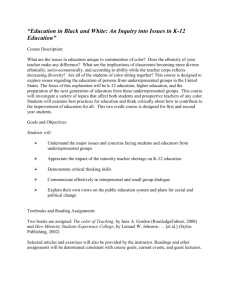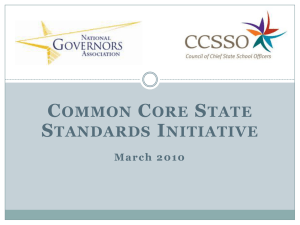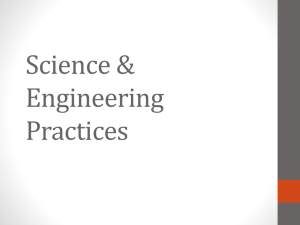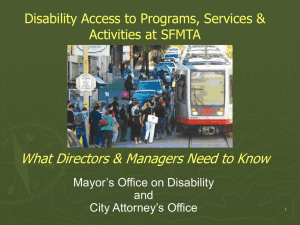IDEA vs. ADA in braille
advertisement
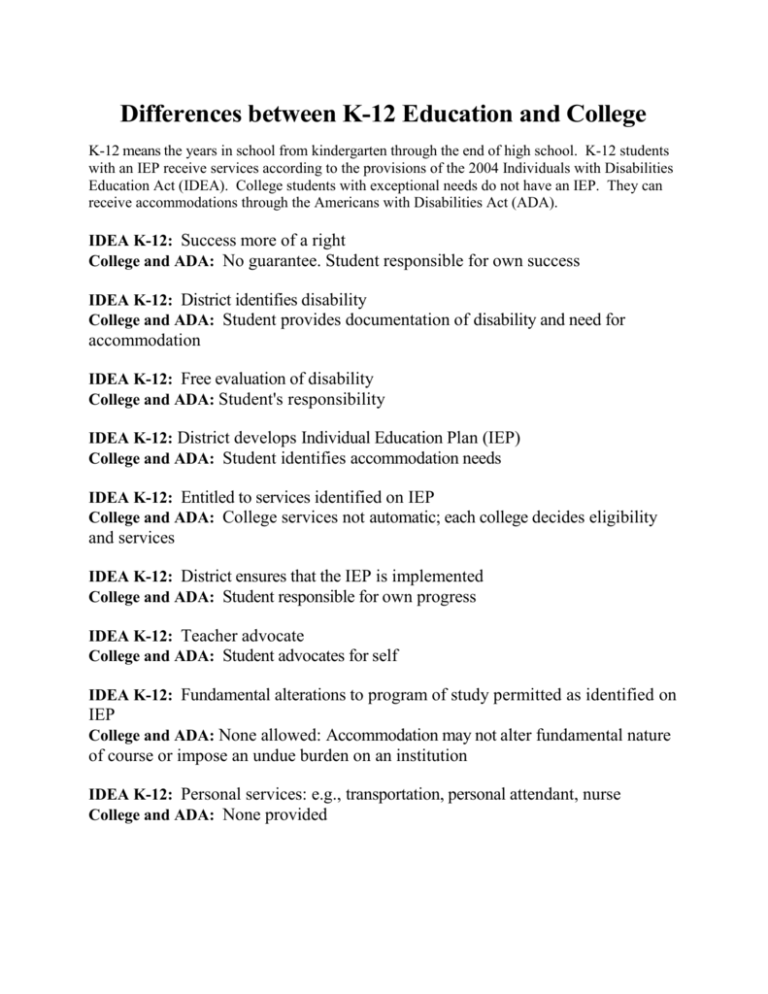
Differences between K-12 Education and College K-12 means the years in school from kindergarten through the end of high school. K-12 students with an IEP receive services according to the provisions of the 2004 Individuals with Disabilities Education Act (IDEA). College students with exceptional needs do not have an IEP. They can receive accommodations through the Americans with Disabilities Act (ADA). IDEA K-12: Success more of a right College and ADA: No guarantee. Student responsible for own success IDEA K-12: District identifies disability College and ADA: Student provides documentation of disability and need for accommodation IDEA K-12: Free evaluation of disability College and ADA: Student's responsibility IDEA K-12: District develops Individual Education Plan (IEP) College and ADA: Student identifies accommodation needs IDEA K-12: Entitled to services identified on IEP College and ADA: College services not automatic; each college decides eligibility and services IDEA K-12: District ensures that the IEP is implemented College and ADA: Student responsible for own progress IDEA K-12: Teacher advocate College and ADA: Student advocates for self IDEA K-12: Fundamental alterations to program of study permitted as identified on IEP College and ADA: None allowed: Accommodation may not alter fundamental nature of course or impose an undue burden on an institution IDEA K-12: Personal services: e.g., transportation, personal attendant, nurse College and ADA: None provided




